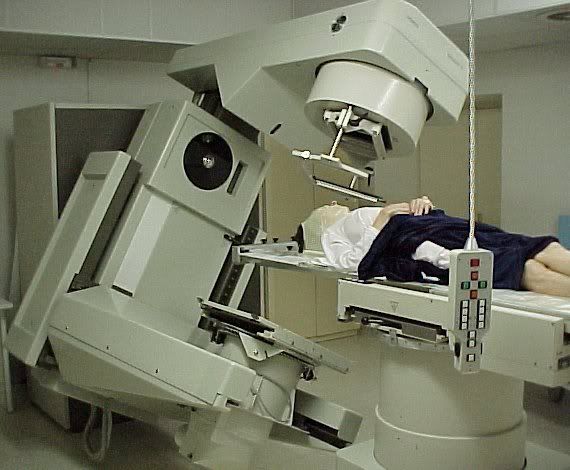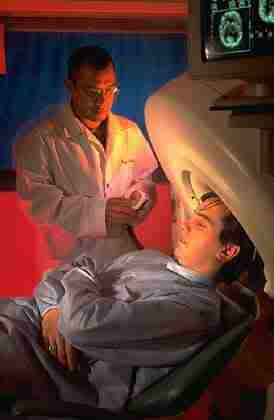Low Serum Testosterone and Mortality in Male Veterans.
TESTOSTERONE LEVELS DEcline with aging, with an average decrease in total serum testosterone levels of approximately 1.5% per year. The prevalence of low serum total testosterone levels is approximately 20% by the age of 50 years and 50% by the age of 80 years. Manifestations of low testosterone include decreased muscle mass and bone mineral density, increased fat mass, central obesity, insulin resistance, decreased libido and energy, irritability, and dysphoria.
In contrast to menopause, in which all women undergo a nearly complete cessation of gonadal estrogen secretion, in men, gonadal androgen secretion decreases gradually and progressively after the age of 30 years, but does not generally cease, and androgen levels remain highly variable in older men. The prevalence of clinical androgen deficiency (symptoms plus low testosterone levels) was recently reported to be about 6% to 12% in middle-aged and elderly men. Testosterone levels also decrease with acute and chronic illnesses and with medications such as glucocorticoids and opiates. Because of the aging of our society, many older men are affected by age-associated low testosterone levels. In addition, the use of testosterone has increased significantly, with a tripling in prescriptions for testosterone over a 3-year period. However, despite the marked increase in testosterone use, the overall risks and benefits remain unclear.
In a recent small study in a geriatric rehabilitation unit, we found that men with a low testosterone level had an increased 6-month mortality compared with men with a normal testosterone level who were of a comparable age and had comparable medical morbidity. Given these unforeseen preliminary findings, we conducted the present retrospective cohort study to examine if repeatedly low serum testosterone levels were associated with increased mortality in a larger sample of middle-aged and elderly men with a longer follow-up, of up to 8 years.
COMMENT
In this study of male veterans 40 years and older, without prostate cancer, followed up for a mean of 4.3 years, men with low and equivocal serum testosterone levels had increased all-cause mortality and shorter survival times compared with men with normal testosterone levels. In an unadjusted model, low testosterone levels were associated with an increased mortality risk of 88% greater than that for men with normal testosterone levels. In the fully adjusted model, which included the covariates of age, medical morbidity, BMI, race, and other clinical factors, low testosterone level continued to be associated with an increased mortality risk of 88% greater than in men with normal testosterone levels. However, a retrospective cohort study cannot establish a causal relationship between testosterone status and mortality, and it is possible that the association is because of the mediation of some other factor that is linked to low testosterone level and mortality. Prior studies may be relevant in examining this association further.
STUDIES OF TESTOSTERONE LEVELS AND ACUTE ILLNESS
The serum testosterone level decreases approximately 90% within 24 to 48 hours after the onset of critical illness, such as surgery, major burns, multiple trauma, and critical medical illness involving ventilator dependence. In patients with acute stroke, a low serum total testosterone level correlated with stroke severity and size and predicted 6-month mortality. Another study found that a low testosterone level correlated with acute illness on admission to an intensive care unit and that survivors had an increase in testosterone levels at discharge in contrast to persistently low levels among nonsurvivors of a comparable age and with a comparable illness severity. In the sensitivity analysis, we excluded early deaths that may have been related to acute illness and continued to find persistent elevated mortality in men with low testosterone levels. Further prospective studies are needed to clarify factors other than acute illness in the association between low testosterone level and increased mortality.
STUDIES OF TESTOSTERONE LEVELS AND CHRONIC ILLNESSES
Several studies have found that low testosterone levels are associated with the metabolic syndrome, hyperinsulinemia, and diabetes mellitus. Several studies noted that low testosterone levels are associated with multiple risk factors for CAD, including hypertension, central obesity, thrombosis, and C-reactive protein, and variable effects on lipids. In several recent studies, testosterone treatment improved the angina threshold, increasing exercise time to ischemia in men with CAD. Low testosterone levels are also associated with sarcopenia, decreased bone mineral density, osteoporosis, anorexia, and fatigue. These are components of the frailty syndrome that is associated with significant morbidity, institutionalization, and mortality in elderly persons. Thus, low testosterone levels are associated with chronic illnesses that are themselves associated with mortality.
In our study, we attempted to control for the effect of chronic illness and medications that may suppress testosterone levels by controlling for age, BMI, diabetes mellitus, CAD, chronic obstructive pulmonary disease, human immunodeficiency virus, hyperlipidemia, and treatment with opiates and glucocorticoids. In addition, we excluded men who had prostate or testicular cancer before study enrollment. After controlling for overall medical morbidity and these other clinical covariates, we continued to find an association between low testosterone levels and mortality. However, it is possible that there are other chronic medical illnesses or conditions not assessed in this study that explain the association between testosterone level and mortality.
STUDIES OF MORTALITY IN MEN WITH LOW TESTOSTERONE LEVELS
Men with hypopituitarism and untreated gonadotropin deficiency had increased cardiovascular mortality and increased overall mortality compared with treated subjects. Another study of hypopituitarism found increased mortality in men with an unknown gonadal status compared with men who were treated with testosterone. In another study, men with Klinefelter syndrome, which is characterized by hypogonadism, had increased mortality compared with that of age-matched control subjects. There have been conflicting results from studies examining the association of castration and mortality.
One study of legally castrated men found increased all-cause mortality but a decrease in cardiovascular mortality. A study of castrated, institutionalized, mentally retarded men found decreased mortality while a study of castrated male singers found no mortality differences compared with intact men. Finally, 2 longitudinal studies of older men found no association between testosterone levels and all-cause mortality or cardiovascular mortality. However, there have been few large prospective studies to examine the association between low testosterone levels and mortality in community-dwelling older men. Recent preliminary findings from a large prospective study found increased cancer-related mortality in community-dwelling men with a total testosterone level of less than 200 ng/dL (less than 6.9 nmol/L). These results of increased mortality in a cohort of men who are healthier than the VA cohort suggest that the association between low testosterone level and mortality may be more generalizable.
Among several limitations to our study, the most significant is the retrospective study design with a lack of systematic assessment of a prospective cohort. This precludes establishing a causal relationship or ruling out the possibility that residual confounding may have occurred because of some other unmeasured factors that may explain the association between low testosterone levels and mortality. Another limitation is that testosterone treatment data were not available. However, we hypothesize that testosterone treatment would bias the results toward the null because it would minimize the differences between the men with low and normal testosterone levels. Another limitation is the use of platform testosterone assays. These assays are similar to those used by most clinical laboratories, but they may be affected by alterations in sex hormone–binding globulin concentrations. However, the criteria used to define low testosterone were sufficiently stringent to exclude most men with low testosterone levels because of a low sex hormone–binding globulin concentrations. Subsequent studies need to be performed using assays (eg, free testosterone by equilibrium dialysis) that are not subject to these alterations.
Finally, our population is not representative of community-dwelling men because it was a VA clinic–based population. This limits the generalizability of these conclusions given that VA patients have greater medical morbidity and a lower socioeconomic class. Also, our cohort had a high overall mortality of 24.2% over a mean follow-up of 4.3 years. However, a recent study of veterans followed up at 9 VA medical centers found a similarly high mortality (18%) over a 2-year period. Another study, of more than 400 000 VA patients, found a crude mortality of 25.7% over 4 years. Thus, although the mortality rate in our study is high, it is comparable to that of other VA studies.
In conclusion, compared with men with normal testosterone levels, the covariate-adjusted mortality risk was nonsignificantly increased by 38% in men with equivocal testosterone levels and significantly increased by 88% in men with low testosterone levels. After removing first-year deaths, low testosterone levels continued to be associated with increased mortality, with a 68% greater mortality risk compared with men with normal testosterone levels. The persistence of elevated mortality risk after excluding early deaths suggests that the association between low testosterone and mortality is not simply due to acute illness. Large prospective studies are needed to clarify the association between low testosterone levels and mortality.
Conclusions
Low testosterone levels were associated with increased mortality in male veterans. Further prospective studies are needed to examine the association between low testosterone levels and mortality.




0 Comments:
Post a Comment
<< Home